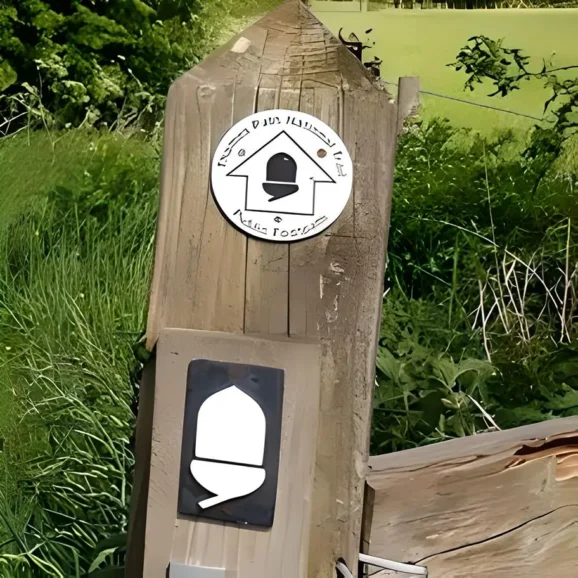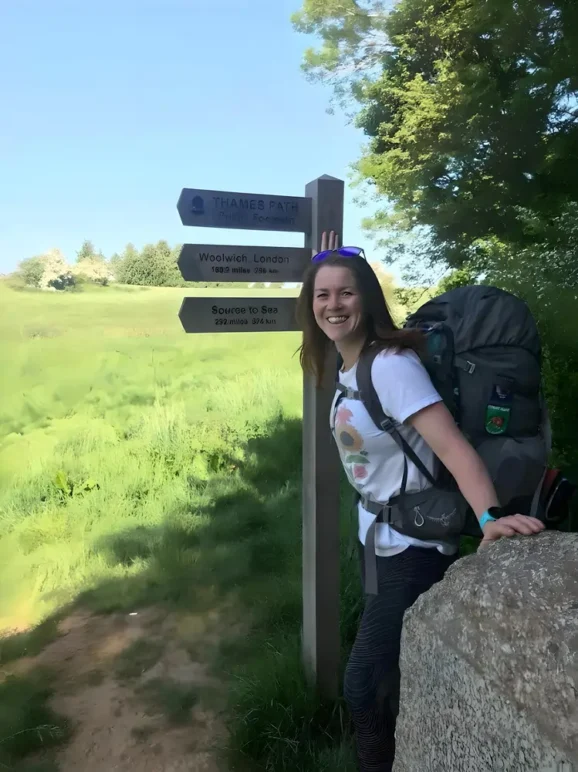It is 9.30pm on the western outskirts of Kew, west London.
James and Tim let their backpacks fall to the ground and loosen their trail-running shoes. Both are limping.
With full darkness fast approaching, they pitch their one-man tents on the side of the footpath and boil a gas stove. Mercifully, it is not raining.
Today, they say, was an ‘easy’ one – only 36 miles.
In less than eight hours, the duo will set off again – each carrying a 15kg backpack ladened with camping equipment, piles of energy gels, and water – on the final leg of the 185-mile-long Thames Path, one of Britain’s best long-distance footpaths (LDFs).
At an average speed of 3mph and with a few breaks, they hope to reach the Thames Barrier in Woolwich, the trail’s end, this time tomorrow night.
James, 44, and Tim, 46, are both single, have no dependents, and work for the same investment firm in the City.
Neither appears especially fit nor obviously mad.
But unlike their colleagues who de-stress with beachside retreats and luxury city breaks, James and Tim find their relaxation elsewhere.
They are among a growing number of young, affluent professionals to get their R&R fix through a form of relentless, punishing exercise known as ‘Fiftying’ – a masochistic mash-up of ultra-running and rambling.
It involves covering huge distances on foot with the simple goal of completing LDFs in at least half the average or recommended time.
The Thames Path, for instance, which follows the River Thames from its source in the Cotswolds to east London, takes most people 14 days.
Save for “major accidents and incidents” James and Tim will complete the journey – of more than 200 miles, including deviations – in just over five.
“It is escapism at its most primitive level,” James explains. “Long distance walking saps your strength and your mental capacity to focus on anything that is not on the ground immediately in front of you. Once you set off, the anxieties that would normally play on your mind – the job, the family or relationship worries, the money problems – drift away.”
“You’ve got nothing to think about apart from the pain,” adds Tim. He is currently wrapping his bloodied heels in duct tape.

Fiftying sits roughly in the middle of a broad spectrum of endurance pursuits that includes low altitude hill walking at the softer end and ultra-running and polar exploration at the extreme other.
On the surface, it sounds easy enough: follow a well-trodden, clearly marked footpath at a standard walking pace, stopping as often as you like along the way for breaks and refuelling.
There are no checkpoints, and no rules save for completing any of Britain’s 46 LDFs by foot power alone in at least half the normal time.
But the toll of walking up to 40 miles a day – more than double that of the average LDF hiker – for days on end soon mounts up.
Using sanitary towels and heavy-duty tape to repair badly blistered, pus-filled feet, is said to be commonplace.
“Mental strength is far more important than physical prowess,” Tim, who with James has completed several LDFs in less than half the time, says.
“Most people could walk 30 or 40 miles in a day, but few in my experience can and would willingly do so again the following day and the day after that.
“Muscles and fitness might get you so far, but only tenacity and sheer bloody-minded grit will get you to the end.”
But not all walkers agree with the idea of completing LDFs against the clock.
Barbara Jones, 45, a secretary who lives in Bristol, has completed more than a dozen LDFs across the UK, and several more overseas.
She said: “Walking is meant to be fun, not hell on earth.
“LDFs are about enjoying the countryside and being at one with it, not marching through it at the fastest possible pace.”
Natural England, a non-departmental public body sponsored by the Department for Environment, Food and Rural Affairs (Defra), added: “The Thames Path is a joy to walk, full of variety of both the urban and rural variety.
“By walking, instead of driving or taking public transport, you get to experience the miles of beauty and wonder that lay at the path side and in the river. It is not only better for the environment, but a true enrichment for the soul.”

Pictures: © Natural England/National Trails






